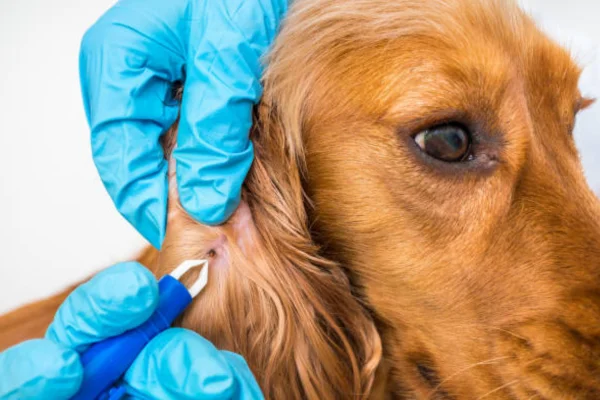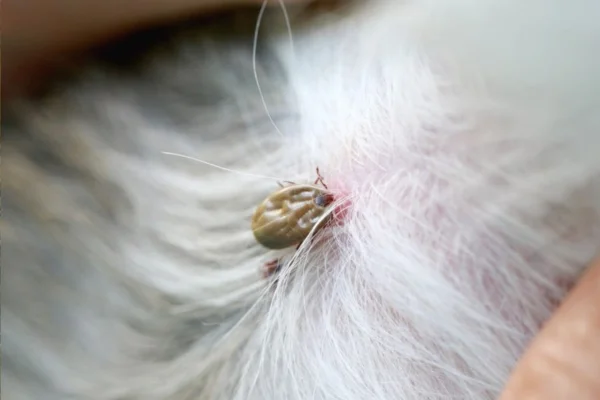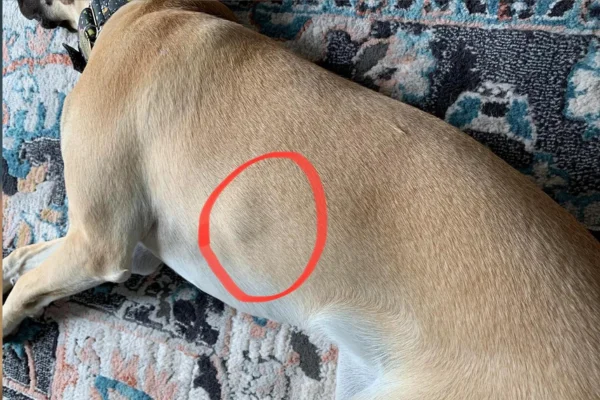Lyme Disease in Dogs: Identification, Symptoms and Treatments
Lyme disease, a bacterial infection transmitted by ticks, is a growing concern among dog owners. This article will explore how to identify, understand the symptoms and treat this disease in our canine friends, using both available information and additional knowledge.
What is Lyme Disease?
Lyme disease is caused by the bacterium Borrelia burgdorferiThis is mainly transmitted by the blacklegged tick, also known as the deer tick. Infection occurs when an infected tick bites a dog and the bacteria enter the bloodstream. Although the disease is more common in certain geographical areas, such as the Northeast and Midwest of the United States, it can affect dogs all over the world.
How Do Dogs Get Lyme Disease?
Ticks are parasites that feed on the blood of mammals, birds and, occasionally, reptiles and amphibians. They are most active in spring and fall, but can be found all year round in milder climates. When an infected tick attaches itself to a dog's skin and feeds on its blood, it can transmit the bacteria Borrelia burgdorferi.
Contents
Dogs that spend a lot of time outdoors, especially in areas with tall grass, bushes and forests, are at greater risk of contracting the disease. In addition, dogs living in areas endemic for ticks have a higher risk of exposure.
Symptoms of Lyme Disease in Dogs
The symptoms of Lyme disease in dogs can vary and are not always immediate. Some dogs may not show signs of infection for weeks or months after the tick bite. However, when symptoms do appear, they can include:
- FeverHigh fever is one of the first signs of infection in dogs.
- LethargyInfected dogs may appear tired and uninterested in their daily activities.
- Loss of appetiteLack of interest in food can be a symptom that something is wrong.
- ClaudicationOne of the most characteristic signs of Lyme disease is intermittent lameness, where the dog may limp on different legs at different times.
- Joint Pain and Swelling: The joints of infected dogs can become painful and swollen.
- Swollen Lymph GangliaLymph nodes can swell in response to infection.
- Kidney problemsIn severe cases, Lyme disease can affect the kidneys, leading to a potentially fatal condition called Lyme nephropathy.
Diagnosis of Lyme Disease
Diagnosing the disease in dogs can be challenging due to the variability of symptoms. However, veterinarians use a combination of medical history, physical examination and laboratory tests to confirm the presence of the infection. The most common tests include:
- Serology: Antibody tests, such as ELISA (Enzyme-Linked Immunosorbent Assay), can detect the presence of antibodies against the Borrelia burgdorferi in the dog's blood.
- Western BlotThis test confirms positive ELISA results by identifying proteins specific to the bacteria.
- PCR (Polymerase Chain Reaction)A more advanced test that detects the bacteria's DNA in the dog's blood.
Lyme Disease Treatment
Treatment of Lyme disease in dogs usually involves the use of antibiotics. The most common antibiotics to treat the disease include:
- DoxycyclineThis is the antibiotic of choice for treating Lyme disease in dogs. It is effective against Borrelia burgdorferi and is usually administered for a period of 4 weeks.
- AmoxicillinAnother antibiotic that can be used, especially if doxycycline is not well tolerated by the dog.
- CephalosporinsIn some cases, third-generation cephalosporins such as ceftriaxone can be used.
In addition to antibiotics, treatment can include anti-inflammatories to relieve pain and swelling in the joints. It is important to follow all the vet's recommendations and complete the course of antibiotics to ensure that the infection is completely eradicated.
Lyme Disease Prevention
Prevention is the best approach to protecting your dog. Some preventative measures include:
- Tick ControlUsing tick prevention products, such as collars, topical or oral medication, can significantly reduce the risk of exposure.
- Regular ChecksInspect your dog regularly for ticks, especially after walks in tick-prone areas.
- VaccinationsThere are vaccines available against Lyme disease for dogs. Consult your veterinarian about the possibility of vaccinating your dog.
- Keeping the environment cleanKeeping the yard clean and free of leaves and tall grass can reduce the presence of ticks.
Final considerations
Lyme disease is a serious condition that can affect dogs' health and well-being. However, with proper awareness, early diagnosis and effective treatment, most dogs can recover completely. Prevention, through tick control and regular checks, is the best way to protect your dog from this disease.
If you suspect that your dog may be showing symptoms of Lyme disease, it is crucial to seek veterinary attention immediately. With the right attention and care, you can help ensure that your four-legged friend stays healthy and happy.
The importance of information
Staying informed about Lyme disease and other tick-borne illnesses is essential for all dog owners. Understanding the risks, symptoms and treatment options can make a difference to your pet's health. By taking preventative measures and watching out for signs of infection, you can help protect your dog from many serious illnesses and ensure that they live a long and healthy life.
Sharing Responsibility
The fight against the disease is not only the responsibility of dog owners, but also of the entire community. Well-maintained properties, community efforts to control tick populations and public awareness are crucial steps in reducing the incidence of this disease. Working together, we can create a safer environment for our dogs and other pets.
In conclusion, it is a significant concern for dog owners, but with the right information and preventive measures, it is possible to minimize the risks. Be aware, educate yourself and protect your dog against this and other threats to its health. Your furry friend depends on you to keep him safe and healthy, and knowledge is your best tool in this mission.










